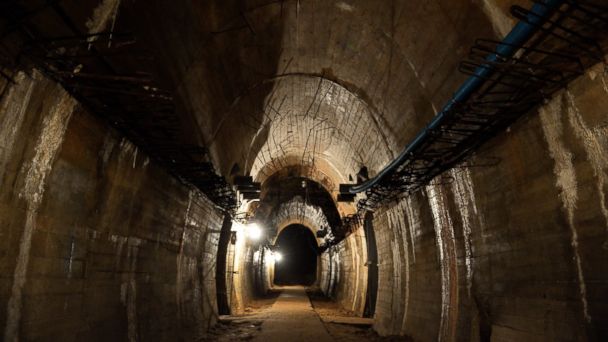A group of treasure hunters have set out in an attempt to find the legendary Nazi train that was rumored to be filled with gold. Many scientists are skeptical about whether or not this train actually existed.
Tony Pollard, an archaeologist from the University of Glasgow comments that, “We’re entering the sphere of almost urban myth. From my own experience as an archaeologist, I’m highly dubious about it, and I think most of the archaeological community shares that opinion.”

Photo: ABC 7
The Treasure Hunt Begins
According to myth, a group of Germans loaded up a train with gold and hid it in a tunnel in 1945. Many attempts have been made to find this mysterious treasure. Last year, a couple of explorers, Piotr Koper and Andreas Richter, had claimed to have found the location of the buried train. The couple claimed that the train was hidden in the town of Walbrzych, Poland.
After this announcement was made, people began to flood the town in order to be apart of this major discovery. Some Polish officials had even backed this claim after supposedly seeing Koper and Richter’s radar images of the site. It was only a few months later when the AGH University of Science and Technology attempted to find the train, and no train was found. Janusz Madej, a geology professor, commented last year that “there may be a tunnel, but there is no train.”
Despite this evidence, the treasure hunters continued on their journey. This week the pair has broke ground on a spot where they’ve found evidence of the train in yet another radar scan. Photos of the excavation confirm that the pair has already started digging. They plan on digging at least 20 feet deep.
The Legendary Train
Whether this train is real or not is still up to speculation. David Passmore, a lecturer from Newcastle University, comments that, ” I suspect that any finding will disappoint those who are seeking gold. I think the widespread use of terminology like ‘legend’ and ‘myth’ in connection with this story is revealing, since there is no compelling evidence of hidden trains in the public domain, despite the use of stat-of-the-art geoprospection technology by Madej and colleagues.”
Pollard has also made note of his skepticism over Koper and Richter’s evidence. Claiming that these image are usually abstract, he comments that “I’ve worked with ground-penetrating radar experts, and these are like no results that I’ve ever seen.” In addition, Pollard has commented that he is very disappointed in the fact that this myth is even up for discussion. Due to the huge treasure associated with this mythical train, Pollard worried that too many people are concerned about the “possibility of striking gold.” Pollard states, “I certainly don’t want people to think this is archaeological research. Archaeology’s raison d’être is to answer questions about the past. If there is indeed a train laced with Nazi gold, it could raise a lot of questions.”
The story has gotten muddled over the years. However, many artifacts and pieces of artwork are still missing. These were taken and moved around by the Nazi’s towards the end of the war. These missing items have only helped fuel the fire of this mystical train. Even if Richter and Koper come out of their excavation empty handed, many will still continue to believe the myth. Only time will tell us whether or not this mysterious train actually exists.

